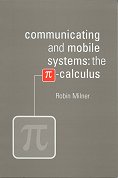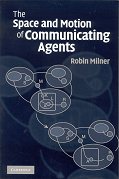The world is increasingly populated with interactive agents distributed in space, real or abstract.
These agents can be artificial, as in computing systems that manage and monitor traffic or health;
or they can be natural, e.g. communicating humans, or biological cells.
It is important to be able to model networks of agents in order to understand and optimise their behaviour.
Robin Milner’s purpose is to describe in this book just such a model,
and he does so by presenting a unified and rigorous structural theory,
based on bigraphs, for systems of interacting agents.
This theory is a bridge between the existing theories of concurrent processes
and the aspirations for ubiquitous systems, whose enormous size challenges our understanding.
The book begins with an assessment of the problems that a structural model for distributed communicating systems must address.
Bigraphs are introduced first informally, then rigorously, before being used to describe the configuration of component agents.
The static theory of Part I gives way in Part II to examining the dynamics of interactions,
leading to the notion of behavioural equivalence and its consequences.
The final Part explores a number of developments, in particular with regard to ubiquitous computing and biological systems.
Ideas for future research and applications are presented.


